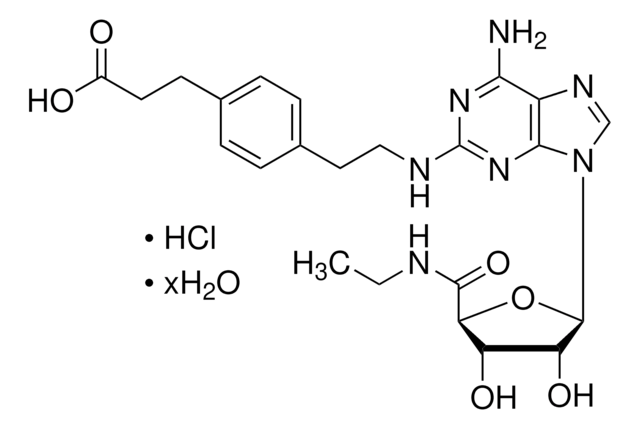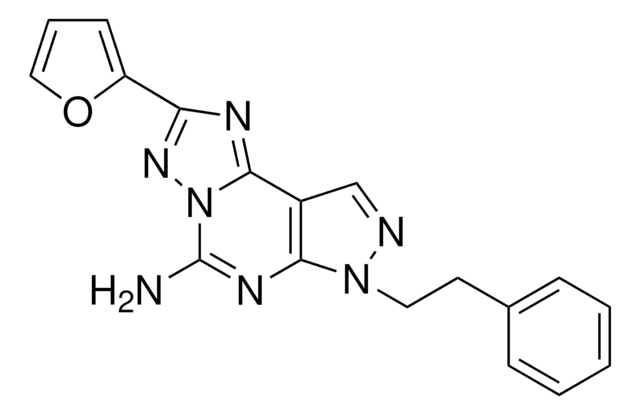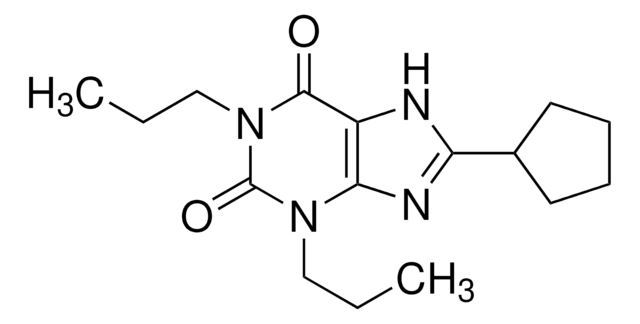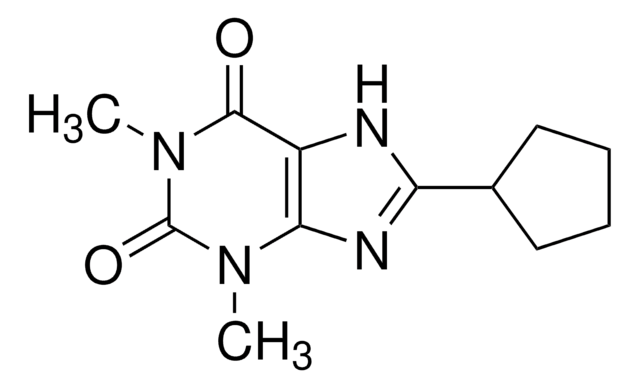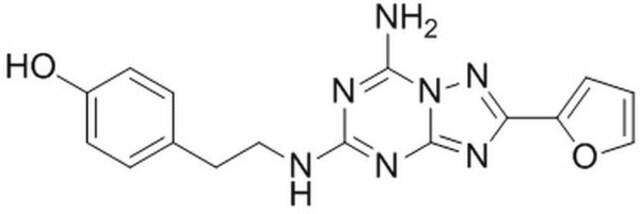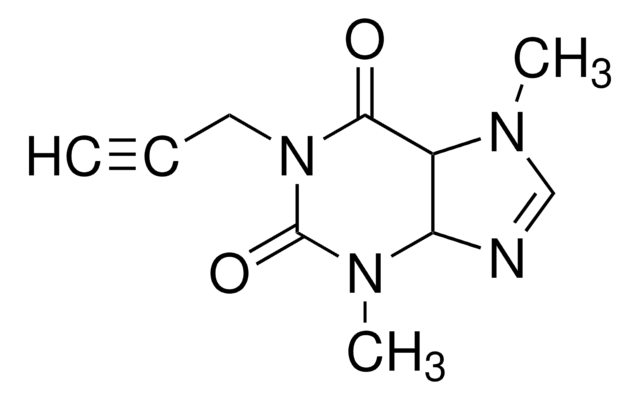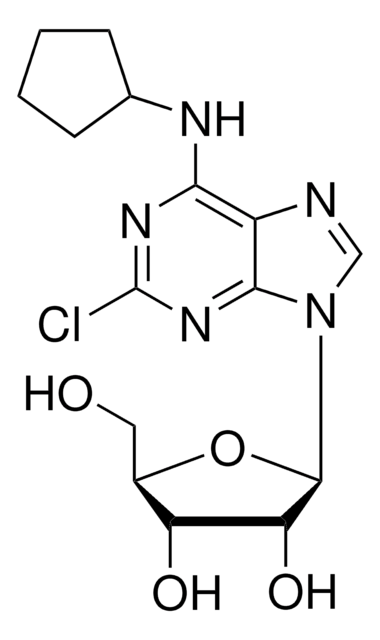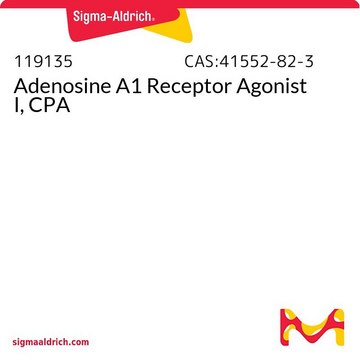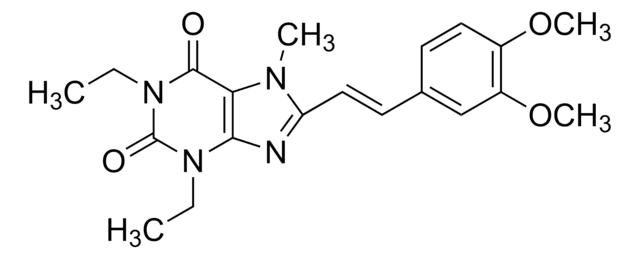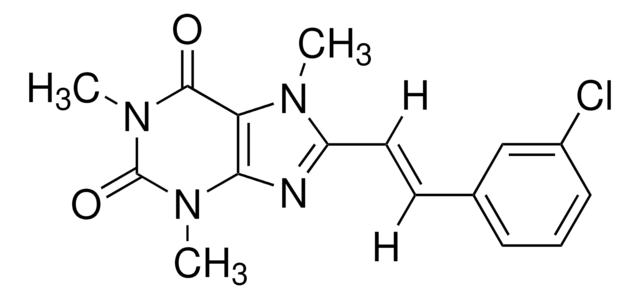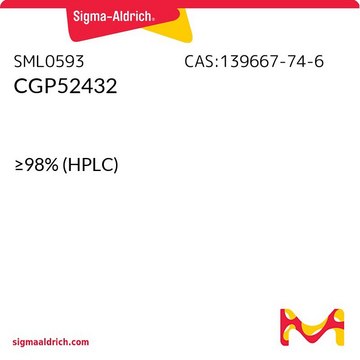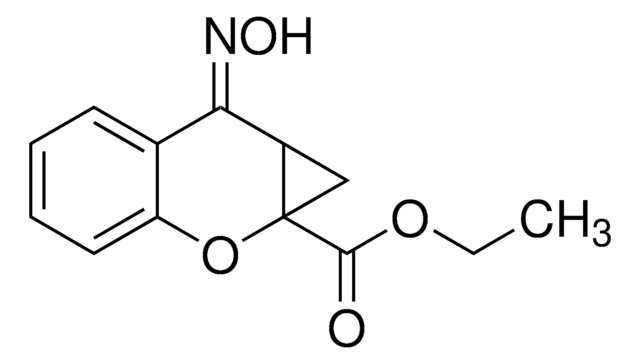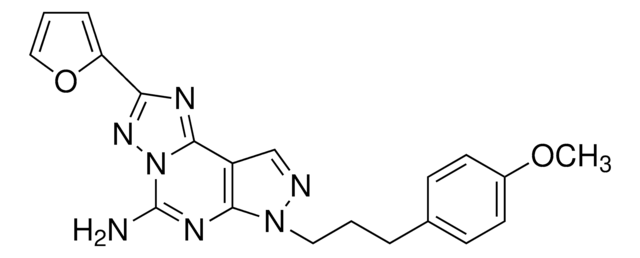Kluczowe dokumenty
C101
8-Cyclopentyl-1,3-dipropylxanthine
solid
Synonim(y):
1,3-Dipropyl-8-cyclopentylxanthine, DPCPX, PD 116,948
About This Item
Polecane produkty
Formularz
solid
Poziom jakości
kolor
white
rozpuszczalność
DMSO: >10 mg/mL
0.1 M NaOH: 2 mg/mL
ethanol: 4 mg/mL
H2O: insoluble
εmax
14,800 at 276 nm in ethanol
ciąg SMILES
CCCN1C(=O)N(CCC)c2nc([nH]c2C1=O)C3CCCC3
InChI
1S/C16H24N4O2/c1-3-9-19-14-12(15(21)20(10-4-2)16(19)22)17-13(18-14)11-7-5-6-8-11/h11H,3-10H2,1-2H3,(H,17,18)
Klucz InChI
FFBDFADSZUINTG-UHFFFAOYSA-N
informacje o genach
human ... ADORA1(134) , ADORA2A(135) , ADORA2B(136) , ADORA3(140)
rat ... Adora1(29290) , Adora2a(25369) , Adora2b(29316) , Adora3(25370)
Szukasz podobnych produktów? Odwiedź Przewodnik dotyczący porównywania produktów
Zastosowanie
Działania biochem./fizjol.
Cechy i korzyści
Hasło ostrzegawcze
Warning
Zwroty wskazujące rodzaj zagrożenia
Zwroty wskazujące środki ostrożności
Klasyfikacja zagrożeń
Eye Irrit. 2 - Skin Irrit. 2 - STOT SE 3
Organy docelowe
Respiratory system
Kod klasy składowania
11 - Combustible Solids
Klasa zagrożenia wodnego (WGK)
WGK 3
Temperatura zapłonu (°F)
Not applicable
Temperatura zapłonu (°C)
Not applicable
Środki ochrony indywidualnej
dust mask type N95 (US), Eyeshields, Gloves
Wybierz jedną z najnowszych wersji:
Masz już ten produkt?
Dokumenty związane z niedawno zakupionymi produktami zostały zamieszczone w Bibliotece dokumentów.
Klienci oglądali również te produkty
Nasz zespół naukowców ma doświadczenie we wszystkich obszarach badań, w tym w naukach przyrodniczych, materiałoznawstwie, syntezie chemicznej, chromatografii, analityce i wielu innych dziedzinach.
Skontaktuj się z zespołem ds. pomocy technicznej
